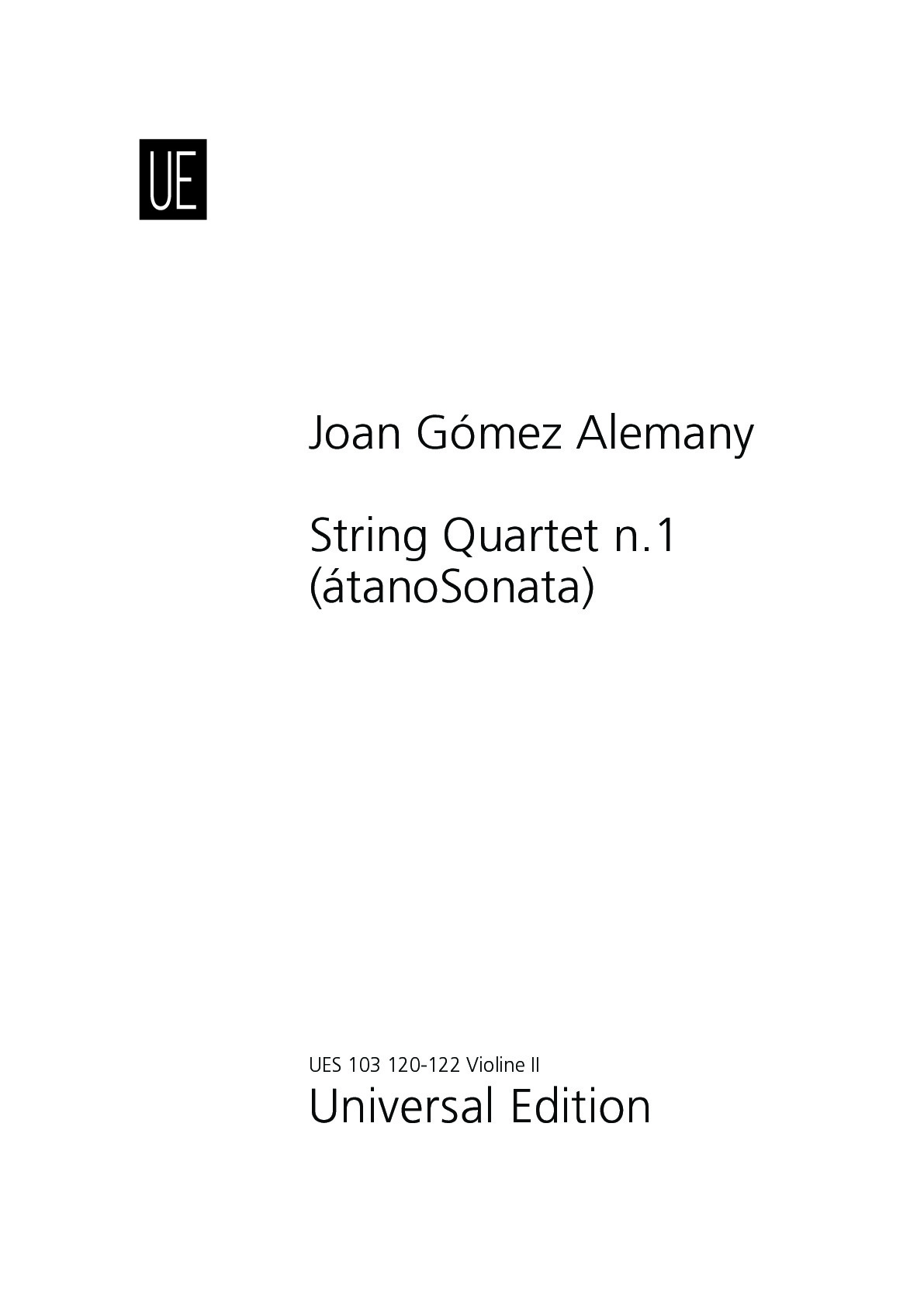.png)
Digital edition
immediately available as PDF
€7.95
Payments:
Shipping:
Joan Gómez Alemany
Violine II (String Quartet n.1 (átanoSonata))
UES103120-122
Type: Stimme
Format: 210 x 297 mm
Pages: 8
Digital edition
immediately available as PDF
€7.95
Payments:
Shipping:
Description
String Quartet Nº1 (átanoSonata) (2017) recorded by Arditti Quartet at the Kunstuniversität in Graz, on October 7th, 2020, although it was premiered by the Maurice Quartet in a reading session at the Mixtur Festival. (átanoSonata) takes us into a review of canonical musical forms, among which Joan Gómez focuses on the sonata, reinvented in this piece through a reformulation of the instrumental timbre that is indebted to the composer, Helmut Lachenmann, in whose writing he proceeds, in a similarly reconstructive way, to establish that protean and personal dialogue with tradition: not as a form of submission and uncritical extension, but as raw material for updating its technical and aesthetic codes.
String Quartet No. 1 evidences this tension through different stages of the motivic and structural development of the score, which goes from the most mechanical and syncopated music in the first bars to a deconstruction of fragmented appearance that sinks into silence in the last ones (played with the instruments on the knees and plucked with plectrums). Between both stages, there are two large phases or intermediate frescoes that, at first sight, will remind us of the most seasoned Lachenmann of Gran Torso (1971), as well as the composer of Reigen seliger Geister (1988-89) in the most suspended bars (following an Adornian terminology) of (átanoSonata). This last Lachenmann’s quartet helps us to understand Joan Gómez’s musical thought and connects with the wake of another crucial author, such as Luigi Nono, whose Fragmente-Stille, an Diotima (1979-80) resonates in the most silent passages of this String Quartet No. 1. No doubt, Gómez Alemany’s textural and timbre conception differs from Nono’s since his own is already a 21st century one; that’s why we must place (átanoSonata) in line with some of the most decisive reinventions of the current string quartet, such as those carried out by the French musique saturée, something that it’s perfectly logical if we consider that he has been trained, among other prestigious composers, by Franck Bedrossian at Graz Kunstuniversität.
In this contemporary re-reading of the sonata, the four large blocks mentioned above, which would correspond to an expanded development of the classical model, are linked in such a way that Joan Gómez literally proceeds to “tie the sonata”, in correspondence with the palindrome, in Spanish (átanoSonata), that gives title to this quartet. In the same way, the instrument`s strings are tied to a new way of conceiving timbre, by means of a saxophone reed that is woven through them, leaving some above and others below (with the same arrangement in violin I and viola; and the opposite one, in violin II). Meanwhile, the cello fixes two clamps on its first three strings, leaving the fourth one open.
With this amount of resources, which includes harmonic glissandi, legno in overpressure, flautando, variable speed of tremolos, circular bows, sul ponticello, or friction of the strings between the bridge and the tailpiece, the quartet historic timbre gives several turns of the screw on itself, emphasizing what Joan Gómez has described as “rough aspects, circular motifs, aggressiveness, strength and violence of sound”, in a conception that draws, like other of his scores, from visual arts and from the direct link between the stroke and the stain, in painting; as well as from manipulation and model in sculpture. In the central bars, the agogic expressive violence might evoke, therefore, the extreme tension of painters such as Jackson Pollock, Antonio Saura or Manuel Millares: three essential refe - rences for him as a composer and artist.
Likewise, the more purely plastic dimension of linguistics also plays an important role in this pie - ce of music just from the very title formulation, as Gómez Alemany specifies: “The subtitle of the quartet contains a parenthesis not as a ‘typographic’ meaning, but as a visual aspect of ‘binding or enclosing’ the ‘(Sonata)’. In turn, the capital S accentuates that sinuosity of the ‘String’”. With all these elements, (átanoSonata) is a living example of our current reformulation of history in order to move it forward, since, as Heinz-Klaus Metzger stated regarding Luigi Nono, the artist should be moved by the moral imperative of progress.
Paco Yáñez
From the libretto of the CD 7 works for chamber music and ensemble edited by Liquen Records
More information
Type: Stimme
Format: 210 x 297 mm
Pages: 8

